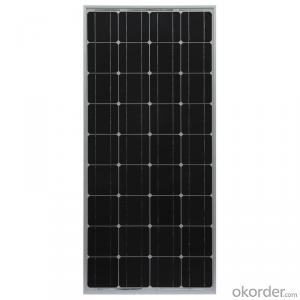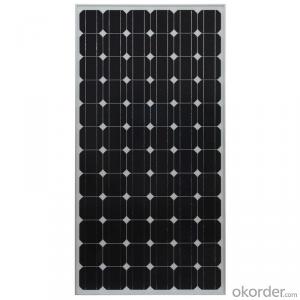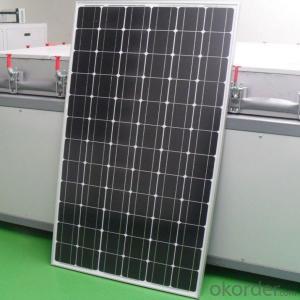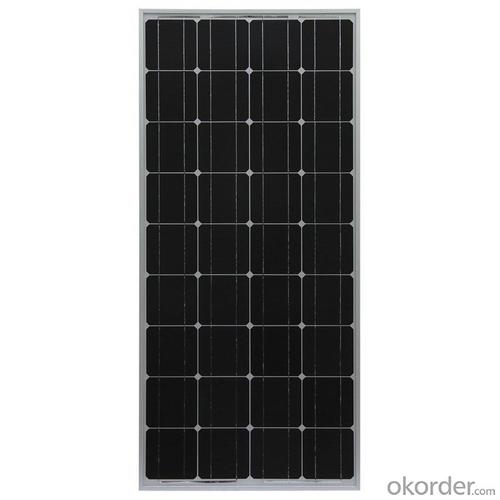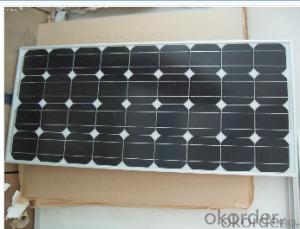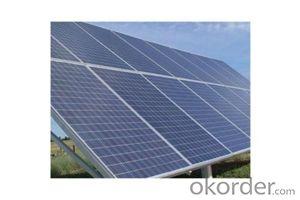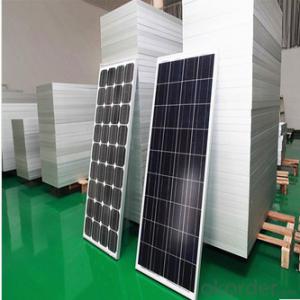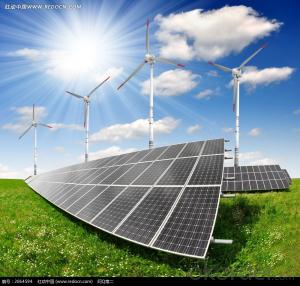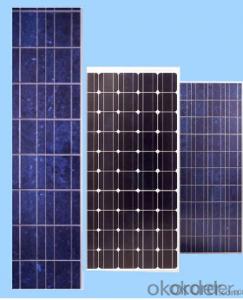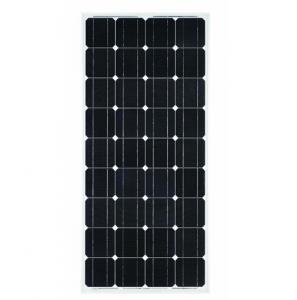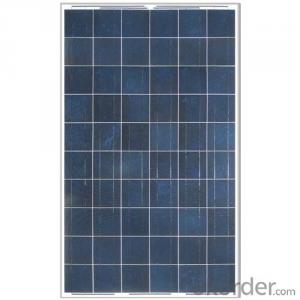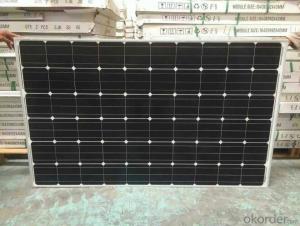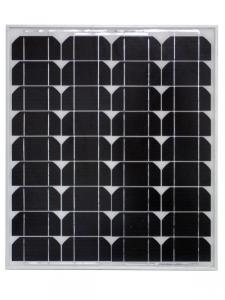300w Solar System PV Solar Panel with TUV IEC INMETRO Certificate - Solar Panels in North Carolina
- Loading Port:
- Shanghai
- Payment Terms:
- TT OR LC
- Min Order Qty:
- 10000 watt
- Supply Capability:
- 1000000 watt/month
OKorder Service Pledge
OKorder Financial Service
You Might Also Like
Specification
Product Description
300W Solar System PV Panel Solar Panel with TUV IEC Mcs CE Cec Inmetro Idcol Soncap Certificate
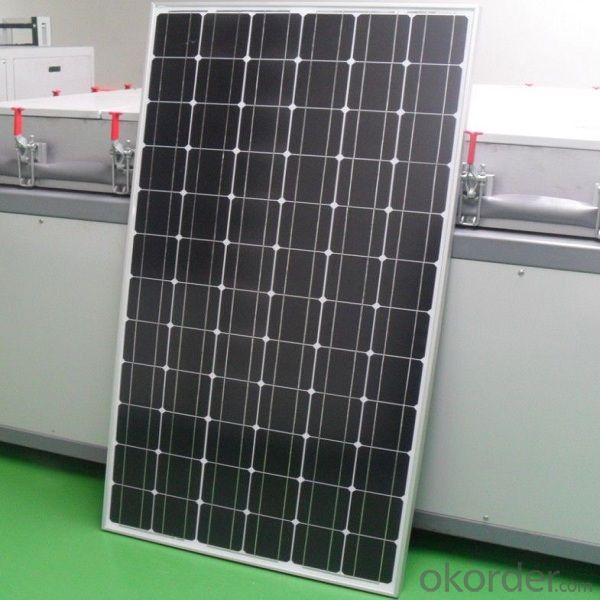
EU Anti-dumping Duty-Free
PV Panel Solar Panel with TUV IEC Mcs CE Cec Inmetro Idcol Soncap Certificate
- TUV IEC, MCS (UK), CE, CEC (Australia), INMETRO, IDCOL, SONCAP CERTIFIED
- [EU ANTIDUMPING DUTY-FREE]
FEATURES
`Long Service Life
`High Efficiency Solar Cells
`Special Aluminum Frame Design
`High Transmission, Low Iron Tempered Glass
`Advanced Cell Encapsulation
APPLICATIONS
`Solar power stations
`Rural electrification, Small home power systems
`Power supply for traffic, security, gas industry
`12V and 24V battery charging system
`Other industrial and commercial applications
| ELECTRICAL CHARACTERISTICS | |||||||
| Maximum Power as per STC | Pmax(W) | 275 | 280 | 285 | 290 | 295 | 300 |
| Power Tolerance | % | ± 3% | |||||
| Maximum Power Voltage | Vm(V) | 36.43 | 36.56 | 36.72 | 36.79 | 36.93 | 37.15 |
| Maximum Power Current | Im(A) | 7.55 | 7.66 | 7.77 | 7.89 | 7.99 | 8.08 |
| Open Circuit Voltage | Voc(V) | 43.7 | 42.92 | 44.06 | 44.21 | 44.35 | 44.5 |
| Short Circuit Current | Isc(A) | 8.1 | 8.17 | 8.23 | 8.33 | 8.41 | 8.72 |
| Maximum System Voltage | VDC | 1000 | |||||
| Cell Efficiency | % | 15.8 | 16.1 | 16.4 | 16.7 | 17.0 | 17.3 |
| Module Efficiency | % | 14.2 | 14.5 | 14.7 | 15.0 | 15.2 | 15.5 |
| Cells per Module | Pcs | 72 | |||||
| Cell Type | Monocrystalline silicon | ||||||
| Cell Size | mm | 156 x 156 | |||||
| Bypass Diodes | Pcs | 12Amp, 6 pcs | |||||
| Max. Series Fuse Rating | A | 15A | |||||
| Temperature coefficient of Isc | % | 0.05 | |||||
| Temperature coefficient of Voc | % | -0.35 | |||||
| Temperature coefficient of power | % | -0.47 | |||||
| NOCT- Nominal operating cell temperature | 47 ± 2 degree | ||||||
| Operating Temperature | from -40 to +85 degree | ||||||
| MECHANICAL CHARACTERISTICS | |||||||
| Dimensions | mm | 1954 x 990 x 50 | |||||
| Weight | Kg | 23.5 | |||||
| Type of Junction Box | TUV certified, IP65 | ||||||
| Cable Type, Diameter | TUV certified, 4mm 2, 90 cm in length | ||||||
| Connector | compatible to Type 4 (MC4) | ||||||
| Tempered Glass | 3.2 mm, high transmission, low iron | ||||||
- Q: Can solar panels be used in areas with high levels of wildlife activity?
- Yes, solar panels can be used in areas with high levels of wildlife activity. However, it is important to take certain precautions to minimize potential impacts on wildlife. This can include implementing proper installation techniques, such as avoiding nesting sites or wildlife corridors, and using deterrents to prevent wildlife from damaging the panels. Additionally, incorporating habitat-friendly designs and partnering with local conservation organizations can help mitigate any potential negative effects on wildlife populations.
- Q: Can solar panels be leased or financed?
- Yes, solar panels can be leased or financed. Many companies offer leasing or financing options for solar panel installation, allowing homeowners and businesses to enjoy the benefits of solar power without the upfront cost. Leasing or financing arrangements typically involve monthly payments over a set period of time, making solar energy more accessible and affordable for a wider range of people.
- Q: Can solar panels be installed on water treatment plants or utilities?
- Yes, solar panels can be installed on water treatment plants or utilities. In fact, many water treatment plants and utilities are increasingly adopting solar power as a sustainable and cost-effective energy solution. Solar panels can be installed on rooftops, open fields, or even on floating platforms over water bodies, providing clean energy to power the operations of these facilities.
- Q: Can solar panels be used on a backpack or portable device?
- Yes, solar panels can be used on a backpack or portable device. These panels, often referred to as portable or foldable solar panels, can be easily attached to a backpack or other portable devices to harness sunlight and convert it into usable electricity. This allows you to charge your electronic devices while on the go, making them ideal for outdoor activities, camping trips, or situations where access to a power source is limited.
- Q: Can solar panels be installed on a factory or industrial facility?
- Yes, solar panels can be installed on a factory or industrial facility. In fact, many factories and industrial facilities are increasingly adopting solar power as a sustainable and cost-effective energy solution. By installing solar panels, these facilities can reduce their reliance on traditional electricity sources, lower their carbon footprint, and potentially save on energy costs in the long run.
- Q: How do solar panels connect to the electrical grid?
- Solar panels connect to the electrical grid through an inverter, which converts the direct current (DC) produced by the panels into alternating current (AC) that can be used by homes and businesses. The inverter is then connected to the electrical grid, allowing any excess electricity generated by the solar panels to be fed back into the grid and used by other consumers.
- Q: I want to know that, is there any thing likehow much charge we can get per square feet. in a solar panel.let me know.also, I will appreciate if reference are given.
- I found some 0 square ft. solar panels that produce 30 watts . 3 watts per s.f. . A 2,000 s.f. home would consume around 2,000 kilowatt hours of electricity in summer months in areas that require air conditioning . This would require 67 kwh daily . You would need ,000 s.f. of panels and dozens of batteries to store the energy for night time .
- Q: How do solar panels generate electricity?
- Solar panels generate electricity through the photovoltaic effect. When sunlight hits the solar cells within the panels, the photons from the sunlight excite the electrons in the cells, causing them to move and create an electric current. This current is then captured and converted into usable electricity for various applications.
- Q: Can solar panels be damaged by hail or other flying debris?
- Yes, solar panels can be damaged by hail or other flying debris. Hailstones, especially those larger in size, can potentially crack or shatter the glass surface of solar panels, impairing their function. Similarly, flying debris during storms or extreme weather conditions can also cause physical damage to solar panels, affecting their efficiency and performance. To mitigate these risks, solar panels are designed to withstand certain levels of impact, and some manufacturers even conduct rigorous testing to ensure their durability in harsh conditions.
- Q: I used to live from my car and i am soon returning to that way.I want a solar panel to a battery to a surge protector so that i can use a portable wifi box and my laptop at the same time. Also i would charge my phone occasionally.I would like the charge to be enough for several days in case of cloudy weather.I just do not want anything to short circuit or ruin my laptop etc.Is thete a way to get this?What do i need or what exactly should i look into?
- Sorry, but you're looking at thousands of dollars to accomplish that. Solar power/panels aren't cheap enough yet to do what you're asking.
Send your message to us
300w Solar System PV Solar Panel with TUV IEC INMETRO Certificate - Solar Panels in North Carolina
- Loading Port:
- Shanghai
- Payment Terms:
- TT OR LC
- Min Order Qty:
- 10000 watt
- Supply Capability:
- 1000000 watt/month
OKorder Service Pledge
OKorder Financial Service
Similar products
Hot products
Hot Searches
Related keywords
